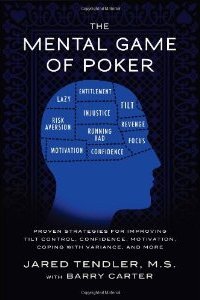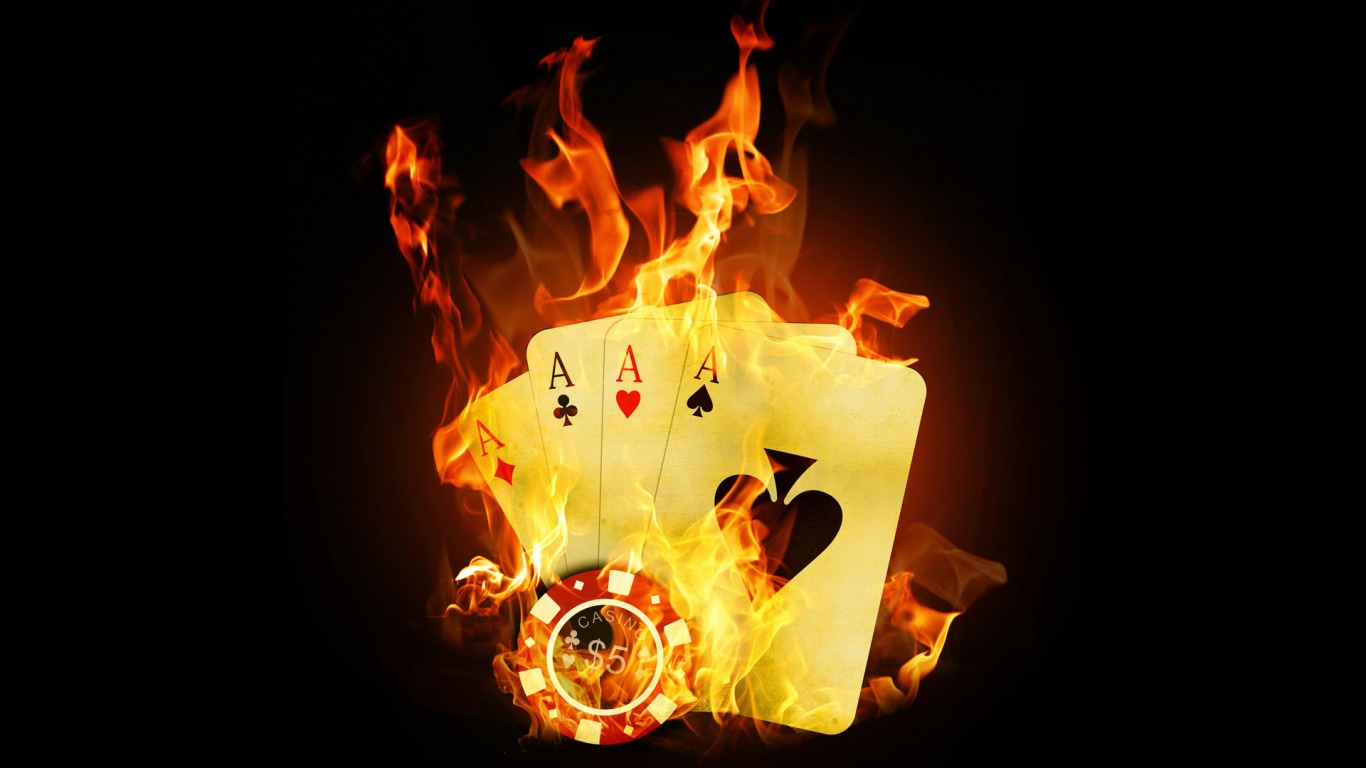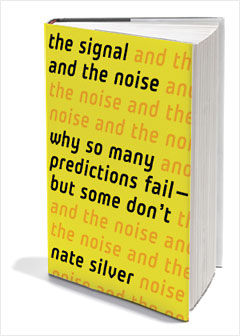
There are some years already, all poker players spoke of Tommy Angelo when it came time to talk about the tilt control. As we know, many good poker players are losers because they tilt too. In parts of upper limits where all opponents are competent, the edge (advantage) that we may have over his opponents may be that it does not tilt (or less than his opponents). In other words, in some parts, the edge of a player will be his "mental game".
Alan Jackson recently said in a video on BlueFire he encountered poker players who were probably better than him, players with whom he talked about poker for hours and hours. Whenever the player said something about poker, it made sense and it was intelligent. Yet despite all these players were losing players in the long term. The problem of course is their mental game! It is this problem that the author wants to address through his book The mental game of poker.
Jared Tendler has a degree in psychology from Northeastern University in addition to a license as a counselor. It is mental coach since 2005. Earlier in his career, he was coach for golfers of the PGA (Professional Golfers' Association of America). Today, it is coach for poker players.
At the beginning of his book, Jared tells us immediately that it is not a good poker player, but that reassure us, it does detract from the fact that it can help us in our goal of becoming a better poker player. Jared has also been a coach for many poker players known that Dusty "Leatherass" Schmidt and Niman "Samoleus" Kenkre.
The book begins with an interesting example.
Take the example of Tiger Woods. In the late 1990s, that player has taken everyone by surprise and is noted for its impressive performance. At this time, unlike many of his opponents, Tiger had a coach to keep physically fit and a specialized coach for his "mental game". Several of his rivals were not physically fit and having a coach for the mind was something wacky enough for them. Today, almost all golfers on the PGA Tour have their personal trainer, to work as their physical and mental shape. Tiger has somehow set a new standard. This is what the author tries to do for poker players. Whatever the discipline, one way to learn is to watch people who are successful and see how they arrive at these results. Habits winners are imitated.
It's the same with poker players. Although the fact of playing cards on the Internet does not require incredible physical skills or special physical strength, physical health is important to the career of a poker player. A holy spirit in a holy body as they say. And because poker is a game of the mind, if we want that spirit is alert, it must be in a fit body.
In short, the book has recently released several goals to return to the beginning of the article, to control your tilt. For the author, many players think they do not seriously tiltent simply because they are not able to identify all forms of tilt. For the author, before checking the tilt, we must first identify and then understand why it happens. The last step is to "cure".
The book is divided into 8 chapters read almost like a novel. Obviously, one of the most important topics or the most recurring themes is the tilt.
Tommy Angelo readers will say they have already read enough on the subject and it could become redundant read another book that deals with the control of tilt. Having read several texts Tommy Angelo and his book, Elements of poker, I have to say no. Jared Tendler brings several new features, including the various forms of tilt.
I said earlier that many poker players think they do not tilt. For this reason, it is important to know how to identify forms of tilt. Personally, I know I tilt the occasion when I play poker, but I had not identified any occasion where I tiltais.
For example, a player can imagine playing his A game when in reality he plays his game B or C the game because it is being tilter. And tilter, it necessarily intends to put all in every hand in frustration at having been suckouter. It can be as subtle as a player who takes no note on his opponents (when a player has used to take several notes on other players) or the fact of playing quickly.
If a player is used to take notes on all his opponents and is attentive to everything that happens at the table, even when not involved in a hand, and that day, it does so no one could say that he tilt.
Or another example of a subtle form of tilt; when the player plays his A game, he thinks and then take the right decision. A player will play tilted slightly too quickly and instinctively make a decision and consider its decision once it is made. In short, playing too fast is a form of tilt, and not all players realize this. This is something that is quite common among many players. Impatience on a poker table is also a form of tilt.
The book is short (241 pages) and relatively expensive ($ 50), but for a player and NL50 + (short, potential customers), this is a buy-in (or less, depending on your limit ) and therefore it is a good investment. Think of all the times you've tilted a buy-in for no reason and you relativiserez the cost of the purchase that can only help you in your quest to become a better poker player.
In addition to being very beneficial, the book is very interesting to read, making it great strength. Many people are afraid to fall asleep reading books so, but I assure you that the author will keep your attention.
This book is intended for all poker players, from beginner to advanced player.
The mental game of poker
Original English version only
241 pages, Hardcover
49.95 U $ D
Discuss this article on the forums PokerCollectif: Comments on The mental game of poker by Jared Tendler
For the curious, here is the table of contents:
CHAPTER 1: INTRODUCTION
Golf Sets the Stage
Enter Poker
Client's Story: Dusty "Leatherass" Schmidt
I'm Not a Poker Player
The Problem with Conventional Poker Psychology
Mental Game Fish
Mental Game Strategy
Mental Game Myths
How to Use this Book
CHAPTER 2: FOUNDATION
The Adult Learning Model
expand sectionInch Worm
Client's Story: Niman "Samoleus" Kenkre
Two Common Mistakes Learning
expand sectionThe Process Model
Preparation / Warm-up
Client's Story: Dusty "Leatherass" Schmidt
Performance
Results
Sidebar: Results-oriented Thinking
Evaluation
Client's Story: Niman "Samoleus" Kenkre
Analysis
Use the Process Model Everyday
CHAPTER 3: EMOTION
Resolution
Malfunctioning Mind
Two Causes of Emotion
Accumulated Emotions
Spectrum of Emotion
Performance and Emotion
CHAPTER 4: STRATEGY
expand sectionInjecting Logic
Recognition
Deep Breath
Injecting Logic
Strategic Reminder
Repeat as Necessary
Quitting
expand sectionResolution
Mental Hand History
Sidebar: Correcting Flaws in Poker
Sidebar: The Mental Side of Poker Mistakes
expand sectionAdditional Strategies
CHAPTER 5: TILT
Tilt = Anger + Bad Play
The Nature of Anger
Accumulated Tilt
The Tilt of Tilt
The Benefit of Tilt
Winner's Tilt
Tilt Profile
Sidebar: Think You Do Tilt?
Seven Types of Tilt
Barry's Take: Understanding your Opponents' Tilt
General Strategy for Tilt
Client's Story: Liz "RikJamesB1atch" Herrera
What Progress Looks Like and How to Keep it Going
expand sectionRunning Bad
Client's Story: Matt "mbolt1" Bolt
Focused on Results More than Quality
Booking a Win
Poker / Life Balance
Predicting Bad Beats
Resetting Your Mind
expand sectionInjustice Tilt
Sidebar: Assuming You're Better
Terrible Good at Spotting Variance
Is More Than Fair
Injustice Tilt Opportunity
Wishing Poker Was not This Way
Desire to Control Variance
An Excuse Not to Learn
Client's Story: Barry Carter
Bad Beat Stories
Jealousy
expand sectionHate Losing Tilt
Competitiveness
Lost Money
Client's Story: Jordan "iMsoLucky0" Morgan
Believing You Can Win Every Hand
Lost Skill
Losing Gets Personal
Losing Hurts More Than Winning Feels Good
expand sectionMistake Tilt
Expecting Perfection
When a Mistake is Not a Mistake
Obvious Mistakes
Threatens Your Goals
Know Too Much, Too Little Mastered
expand sectionEntitlement Tilt
Overconfidence
Losing to Fish
Client's Story: Liz "RikJamesB1atch" Herrera
Losing to Regulars
Client's Story: Mike "Syous" Song
Moving up in Stakes
expand sectionRevenge Tilt
No Respect
Facing Constant Aggression
Player with History
Regaining Confidence
Taking Your Money
Enacting Revenge
Owned Your Soul
expand sectionDesperation Tilt
Sidebar: When Losing Feels Good
Non-negotiable Strategy
expand sectionUsing Tilt to Improve Your Play
CHAPTER 6: FEAR
The Nature of Fear
Barry's Take: Be Fearless Like Ivey
Incomplete Information
Fuel to Perform
expand sectionFear Profile
Overthinking
Not Trusting Your Gut
Barry's Take: Players Feel
Second-guessing
Performance Anxiety
Negative Future
expand sectionGeneral Strategy for Resolving Fear
Playing out the Fear
Answering Questions
expand sectionCommon Fears
Fear of Failure
Fear of Success
Fear of Mistakes
Fear of a Bad Run
Client's Story: Pascal "Stake Monster" Tremblay
Fear of Moving Up in Stakes
Risk Aversion
Client's Story: Barry Carter
CHAPTER 7: MOTIVATION
The Nature of Motivation
Inspiration
Barry's Take: Prop Bets
Stable Motivation
expand sectionCommon Motivational Problems
Laziness
Procrastination
Running Good and Bad
Burnout
Sidebar: Underestimating Stress
Goal Problems
Client's Story: Matt "mbolt1" Bolt
Freerolling Your Talent
Stop Dreaming
Lack of Learning
Client's Story: Jordan "iMsoLucky0" Morgan
Numb to Emotions
Hopeless
CHAPTER 8: CONFIDENCE
The Nature of Confidence
Stable Confidence
Under-confident and overconfident
expand sectionDeveloping Stable Confidence
The Skill of Recognizing Variance
The Skill of Recognizing Your Skill
The Skill of Recognizing Your Opponents' Skill
Barry's Take: Defining Your Edge
Illusion of Control
Client's Story: Matt "mbolt1" Bolt
Illusion of Permanence
Illusion of Learning
Wishing
Client's Story: Sean Gibson
Conclusion
You Have Not Mastered This Book
Appendix I
Warm-up and Cool-down
Appendix II
Client Questionnaire




